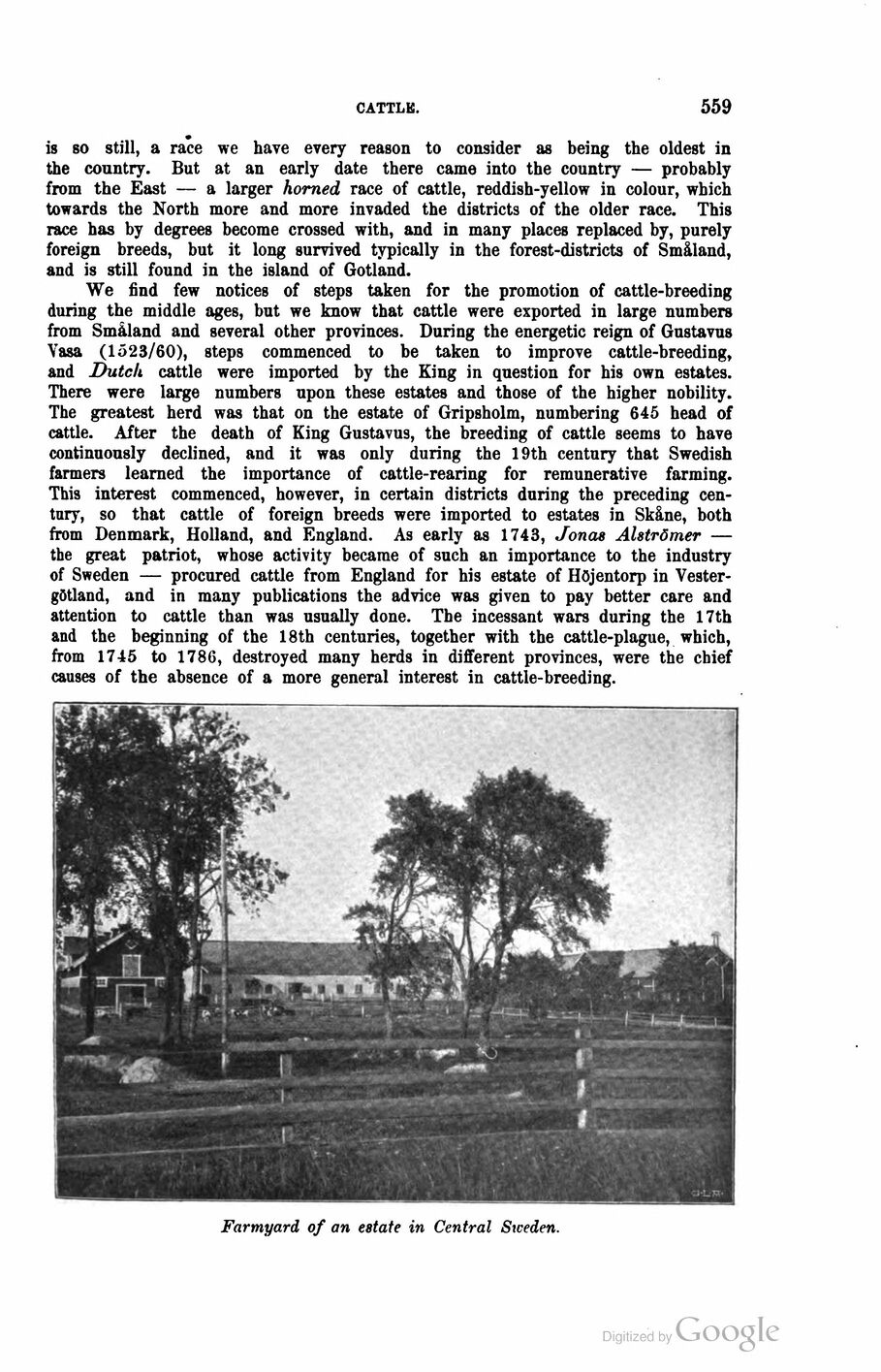
Full resolution (JPEG) - On this page / på denna sida - Second part - VI. Agriculture and Cattle-Breeding - 2. Cattle-Rearing. By Captain V. Nauckhoff, Stockholm - Cattle

<< prev. page << föreg. sida << >> nästa sida >> next page >>
Below is the raw OCR text
from the above scanned image.
Do you see an error? Proofread the page now!
Här nedan syns maskintolkade texten från faksimilbilden ovan.
Ser du något fel? Korrekturläs sidan nu!
This page has never been proofread. / Denna sida har aldrig korrekturlästs.
CATTLE.
559
is so still, a race we have every reason to consider as being the oldest in
the country. But at an early date there came into the country — probably
from the East — a larger horned, race of cattle, reddish-yellow in colour, which
towards the North more and more invaded the districts of the older race. This
race has by degrees become crossed with, and in many places replaced by, purely
foreign breeds, but it long survived typically in the forest-districts of Småland,
and is still found in the island of Gotland.
We find few notices of steps taken for the promotion of cattle-breeding
during the middle ages, but we know that cattle were exported in large numbers
from Småland and several other provinces. During the energetic reign of Gustavus
Vasa (1523/60), steps commenced to be taken to improve cattle-breeding,
and Dutch cattle were imported by the King in question for his own estates.
There were large numbers upon these estates and those of the higher nobility.
The greatest herd was that on the estate of Gripsholm, numbering 645 head of
cattle. After the death of King Gustavus, the breeding of cattle seems to have
continuously declined, and it was only during the 19th century that Swedish
farmers learned the importance of cattle-rearing for remunerative farming.
This interest commenced, however, in certain districts during the preceding
century, so that cattle of foreign breeds were imported to estates in Skåne, both
from Denmark, Holland, and England. As early as 1743, Jonas Alströmer —
the great patriot, whose activity became of such an importance to the industry
of Sweden — procured cattle from England for his estate of Höjentorp in
Vestergötland, and in many publications the advice was given to pay better care and
attention to cattle than was usually done. The incessant wars during the 17th
and the beginning of the 18th centuries, together with the cattle-plague, which,
from 1745 to 1786, destroyed many herds in different provinces, were the chief
causes of the absence of a more general interest in cattle-breeding.
Farmyard of an estate in Central Sweden.
<< prev. page << föreg. sida << >> nästa sida >> next page >>